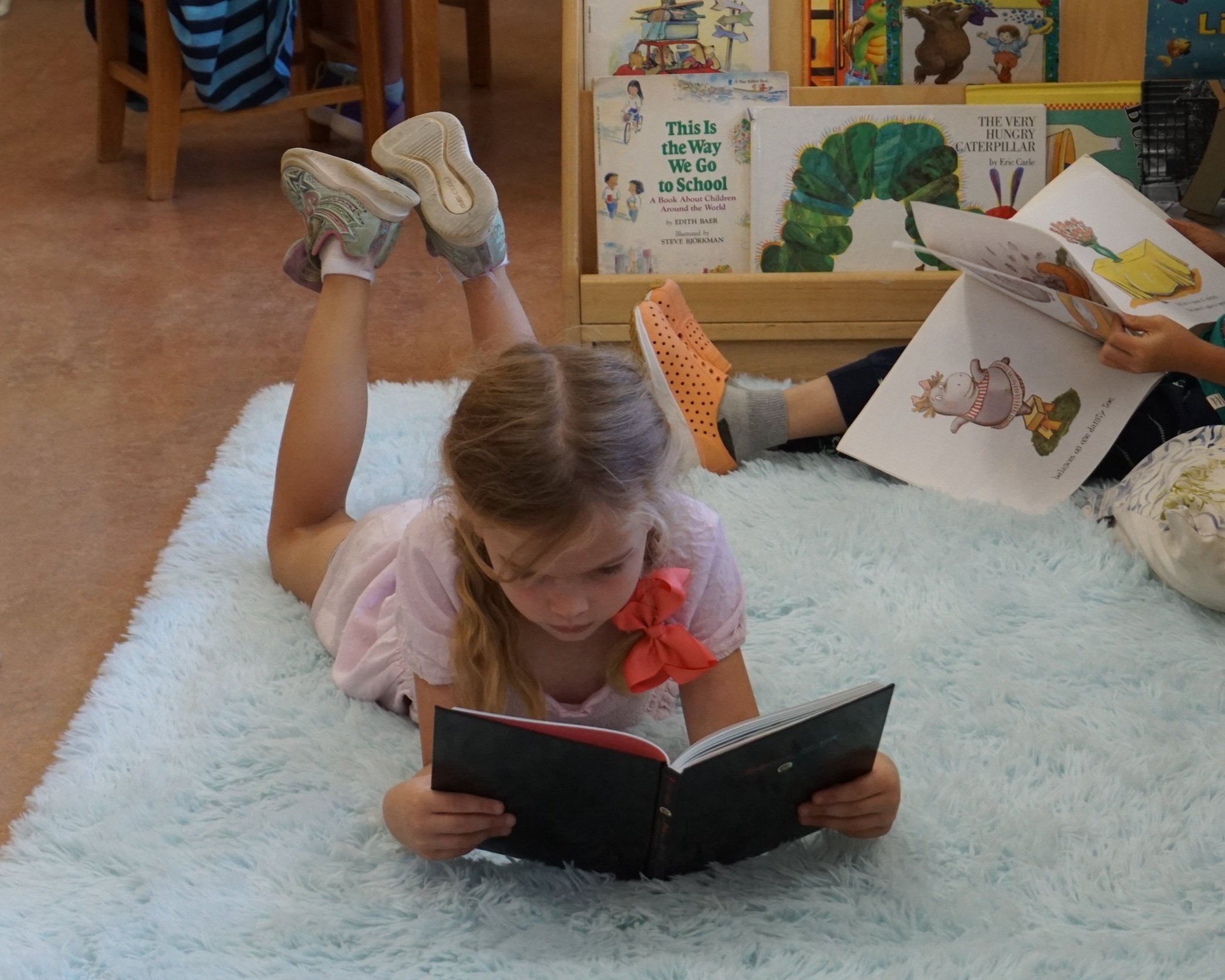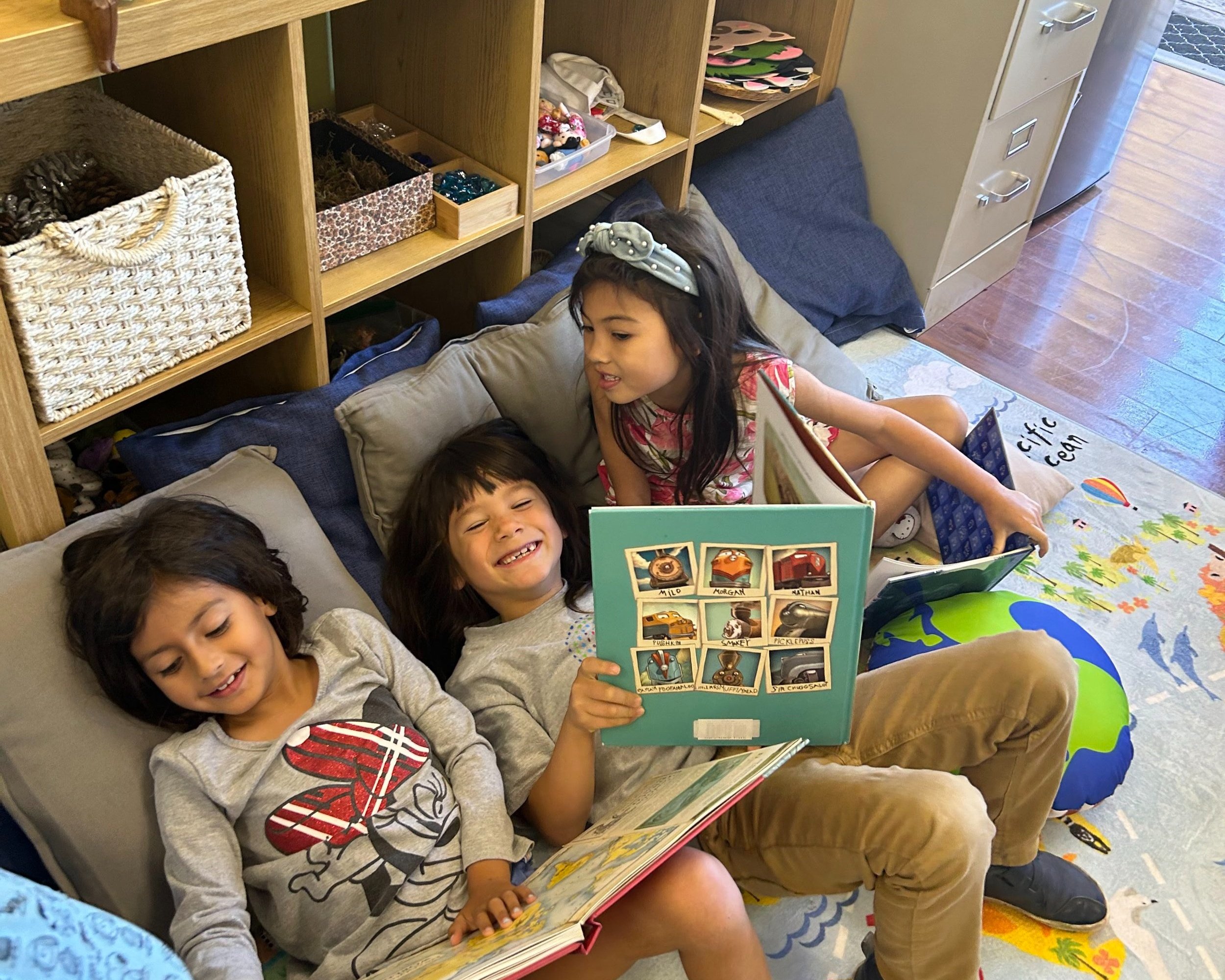Our Elementary reading curriculum incorporates the latest neuroscience research about learning to read while creating opportunities for students to develop a love of literature and practice increasingly sophisticated analyses of varied texts. In all elementary grades, students engage in “Reader’s Workshop,” which includes elements of direct instruction, collaborative learning, and independent work.
Students in kindergarten through second grade who are identified as needing additional support in developing their reading skills receive additional support through special instructional groupings with highly qualified teachers.
The outcome of Ventana’s reading program is students who have acquired the skills to be fluent readers capable of thoughtful analysis of text. They know themselves as readers and understand that reading is a tool they can use to make meaning of the world.
-
In kindergarten and first grade, students develop their awareness of the connections between sounds and symbols through phonics instruction. This targeted, systematic approach helps students who are just learning to read, as well as ensuring that those students who are already reading are developing strong habits and frameworks that will allow them to tackle increasingly complex vocabulary and texts.
In kindergarten, students are building their understanding of how letters have specific sounds and what their mouths do when they make those sounds. Similarly, they are making the connections necessary to translate those specific sounds into corresponding written letters. Students engage in targeted practice to build reading pathways and learn beginning reading comprehension strategies that are targeted to their individual reading abilities.
In first grade, there is more emphasis placed on the integration of phonics concepts, and students are introduced to more complex phonics variations. Students continue to build their repertoire of comprehension strategies, with more focus placed on character and the basic components of a plot. Structures for nonfiction texts are taught, and students apply their knowledge using nonfiction texts as resources for investigations.
-
In second and third grades, readers have developed the basic toolkit and are building their reading stamina as well as learning reading strategies that allow them to make meaning of higher-level texts.
Second grade students are grounding their ability to integrate various skills to become fluent readers capable of making meaning of increasingly complex texts. They are beginning to learn how to hold deeper discussions of both fiction and nonfiction texts through both guided instruction and small group practice.
Third grade students are learning and practicing skills related to literary analysis, including more abstract understandings of text. They are beginning to explore genres, using this as an entry point to better understand the structures and themes associated with different types of stories. Through this, they are learning to identify the author’s craft in putting together more complex characters and plot development. Students are also developing their ability to cite evidence from both fiction and nonfiction sources. They are engaging in deep discussions that bring forth multiple perspectives on a text, learning to make inferences based on information that is explicit in the text, and then using evidence to support those claims.
-
In fourth and fifth grades, students are fluent readers who are able to make deeper, more abstract meaning of what they read. As students progress through these grades, their ability to engage with the text and delve into literary analysis increases with practice, and the level of independence they exhibit increases.
They learn strategies that allow them to analyze specific sections of text, support their claims with evidence, evaluate an author’s intent and craft, and identify themes. Building on their previous learning about inference, students in fourth and fifth grades are making inferences based on information that is implicit in a text, and then engaging in discussions or written analyses that require them to support their assertions using varied evidence.
Questioning sources is a key component of nonfiction analysis in fourth and fifth grades as students learn to evaluate the veracity of varied sources, including comparing multiple sources to cross-check information. They are beginning to build a repertoire of questions they can ask about any source, including what information or perspectives may be missing. Students are learning common nonfiction text structures and use that understanding to analyze the multiple resources they consult in their investigations.
Throughout these two years, students gain greater independence in navigating both literature and nonfiction sources, citing evidence and supporting claims about a text with increasing sophistication.









